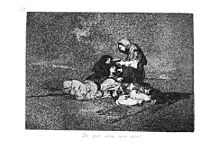Western Europe
Further information: Medieval demography and Crisis of the Late Middle Ages
The Great Famine of 1315–1317 (or to 1322) was the first major food crisis that struck Europe in the 14th century. Millions in northern Europe would die over an extended number of years, marking a clear end to the earlier period of growth and prosperity during the 11th and 12th centuries.[90] Starting with bad weather in the spring of 1315, widespread crop failures lasted until the summer of 1317, from which Europe did not fully recover until 1322. It was a period marked by extreme levels of criminal activity, disease and mass death, infanticide, and cannibalism. It had consequences for Church, State, European society and future calamities to follow in the 14th century. Medieval Britain was afflicted by 95 famines,[91] and France suffered the effects of 75 or more in the same period.[92] The famine of 1315–6 may have killed at least 10% of England's population, or at least 500,000 people.[93] An engraving from Goya's Disasters of War, showing starving women, doubtless inspired by the terrible famine that struck Madrid in 1811-1812.





